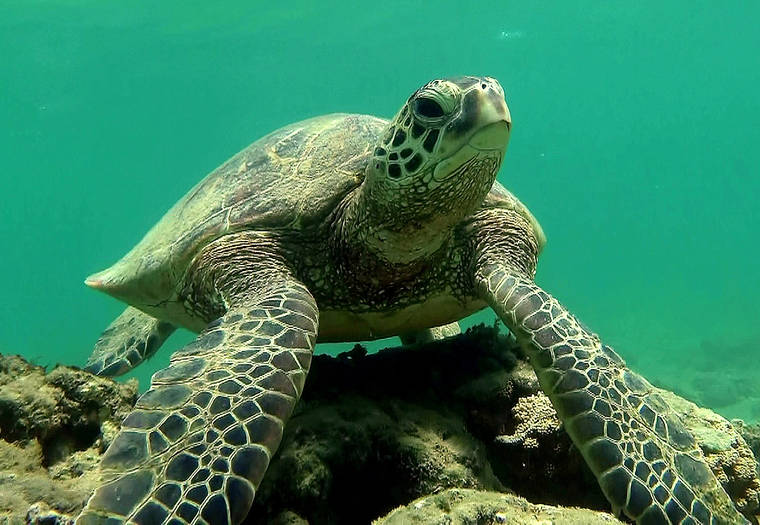LIHU‘E — Every year honu (green sea turtles) and honu‘ea (hawksbill sea turtles) haul themselves out of the ocean and dig their nests into the sand on beaches on Kaua‘i, and all over the state.
And it’s that time of year again in the islands.
Honu, honu‘ea and olive ridley sea turtles have all been known to nest on Hawai‘i’s beaches. Recently an increasing number of honu have been nesting on the main Hawaiian Islands, with 58 nests documented on O‘ahu in 2020.
Sea turtle programs state-wide documented almost 100 honu nests, plus an additional 44 honu ‘ea nests. All three sea turtles are protected under the U.S. Federal Endangered Species Act.
While it is not possible to predict the level of nesting activity in Hawai‘i this year, state and federal offices along with state-wide partners are gearing up for the upcoming summer nesting season.
The nesting season typically lasts from mid-April through early September.
“The unprecedented level of nesting activity last year took everyone by surprise,” said Dr. Sheldon Plentovich, USFWS coastal program coordinator. “Since 2016 we have worked with community volunteers to locate and monitor sea turtle nests. Between 2016 and 2019 we never observed more than 10 nests on O‘ahu, so finding 58 in 2020 was very exciting for our team and the local community.”
National Oceanic and Atmospheric Administration estimates there are only 20 to 25 hawksbill turtle females nesting annually in Hawaii.
In 2019, biologists and hobby snorkelers on Kauai also noticed a population trend in turtles on the island — the first confirmed hawksbill turtle hatching in five years in Wainiha.
Independent sea turtle scientist George Blazas confirmed the species, as well as Cheryl King at Hawaiian Hawksbill Conservation.
At the time, Blazas said he suspected more hawksbill turtle nesting is happening on Kauai, but it’s just not seen because hawksbill turtles tend to create nests that are difficult to find.
The honu‘ea (hawksbill) nests primarily on the islands of Hawai‘i, Maui, and Moloka‘i, while honu are known to use beaches state-wide. In Hawai‘i, sea turtles typically lay their nest at night near or under coastal vegetation well above the high tide line. In contrast, basking turtles are usually found closer to the water both during the day and at night.
They like to flip sand with their front flippers when basking, but digging with their rear flippers might be an indicator of nesting activity.
Sea turtle nesting in Hawai‘i provides a unique opportunity for biologists and volunteers to engage with the public to help find and track nesting activity.
Members of the public interested in volunteering during this upcoming nesting season to help survey beaches for nesting activity may send an email of interest to RespectWildlife@noaa.gov.





